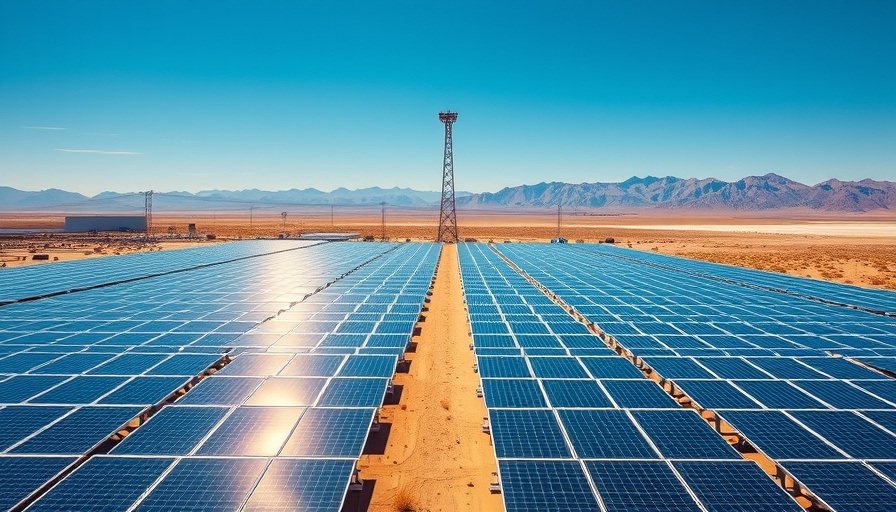
Global Energy Demand Reaches New Heights
In 2024, the world reached an unprecedented peak in energy demand, reflecting a complex interplay of sources and an accelerated push towards renewables. According to the Energy Institute's latest report, all major energy sources—including oil, gas, renewables, coal, nuclear, and hydropower—experienced significant growth, marking the first time this occurred in nearly two decades.
The Rise of Renewables: A Double-Edged Sword
The 74th edition of the Statistical Review highlighted that renewable energy sources, particularly wind and solar, expanded at a staggering 16 percent, significantly outpacing the overall growth in energy demand, which was recorded at two percent. Interestingly, China's contribution was substantial, accounting for 57 percent of the new renewable energy capacities, largely driven by their robust investments and policies that support both fossil fuels and renewable sources.
Understanding China's Energy Dynamics
China’s dual role as the fastest-growing source of clean energy while also being the largest emitter of carbon presents a paradox that impacts global energy trends. As Dr. Nick Wayth, CEO of the Energy Institute, pointed out, China's energy choices will significantly influence whether the world can transition to a secure, affordable, and low-carbon energy future. In fact, as of last year, around 60 percent of China’s electricity still relied on coal, emphasizing the need for a balanced yet decisive shift towards cleaner strategies.
Electricity Demand Is On The Rise
The report also noted a noteworthy increase in electricity demand, which surged four percent, indicating that we are fully entering an age defined by electrification. This shift is particularly significant in developing economies, where access to modern energy is improving rapidly. The trend suggests a transformative change in the global energy landscape, pushing beyond traditional fossil fuel reliance towards a more electrified future.
The Future of Renewable Energy
Forecasts for solar power generation show it may soon surpass wind energy output, potentially in 2025 or 2026. Such insights provide actionable knowledge for hospitality professionals looking to adapt their operations in line with emerging eco-trends. Building eco-friendly accommodations that leverage these energy sources not only positions businesses favorably but also enhances sustainability awareness within the industry.
The Climate Challenge Looms
Despite these advances, the Energy Institute reported a worrying trend: global carbon dioxide-equivalent emissions rose by one percent, reaching record levels for the fourth consecutive year. This contradiction underscores the complexities of the energy transition we are experiencing—progress in renewables is not yet enough to counter the overall rising demand for energy.
Embracing Sustainable Practices in Hospitality
For boutique hospitality professionals, understanding and adapting to these changes can play a crucial role in establishing eco-conscious businesses. Emphasizing sustainability through “chaos gardening,” utilizing leather alternatives to reduce plastic reliance, and supporting local nature reserves can create a unique brand identity while contributing positively to global challenges.
Moving Forward: Opportunities and Responsibilities
As we navigate the chaos of an evolving energy landscape, embracing renewable resources can offer unique advantages to small-scale hospitality ventures. By integrating sustainable practices, not only can businesses enhance their reputation but also attract a growing clientele that prioritizes environmental consciousness.
The time is ripe for boutique hospitality professionals to energize their operations with sustainable strategies that reflect the changing energy landscape.
 Add Row
Add Row  Add
Add 




Write A Comment